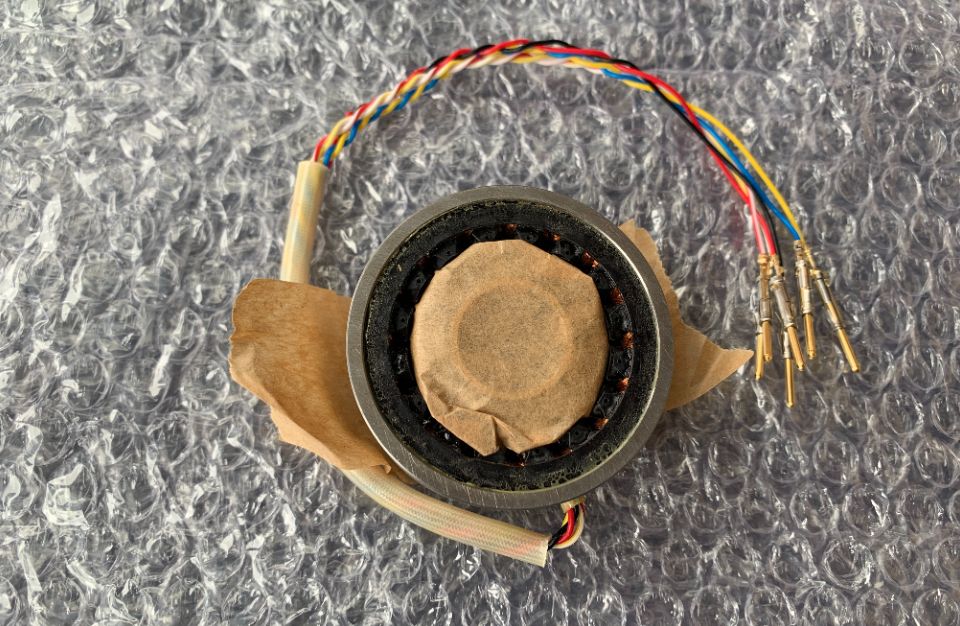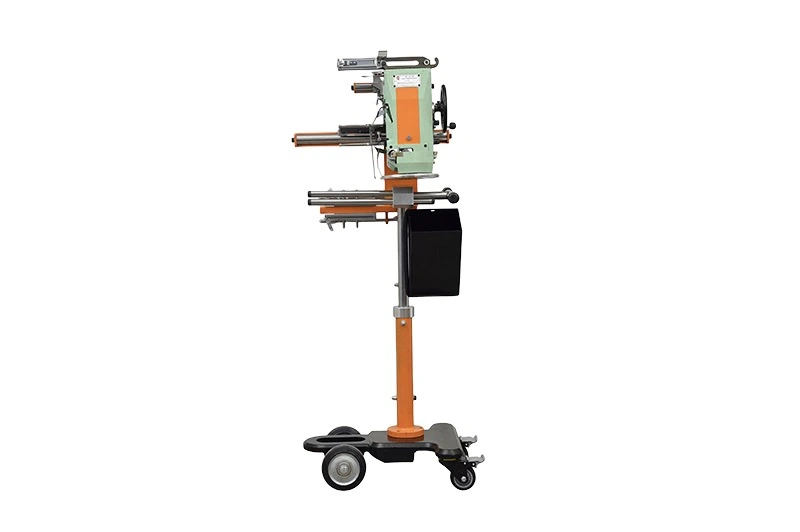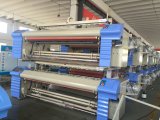Air jet loom: The energy saving of the filling system
The energy saving of the weft insertion system is mainly carried out by optimizing the weft insertion process and choosing the good energy saving performance.
Optimize the weft insertion process
1. Adjust the installation position and pressure of main nozzle reasonably
The incorrect installation of the main nozzle will cause the flow of the main nozzle to increase, and the effective part of the air flow into the shape of the reed groove will be reduced, which will increase the gas consumption. The installation location of main nozzle is mainly determined by the distance between the first piece and the swinging main nozzle. The formula is Ds = 6.8 (as + 0.147 do): s is the distance from the exit of the main nozzle of the measured point. A is the main nozzle turbulence factor; Do is the main nozzle outlet diameter; Ds is the diameter of the section jet cone of exit s of the main nozzle. In the production operation, the frequency strobe used to observe the size of the flow cone of the reed groove to adjust the distance.
The pressure of the main nozzle should be considered according to the quality of the filling material, the line density, fabric width, speed and so on. Under the condition of the normal flight of weft yarn, reduce the pressure of the main nozzle, and can obtain the effect of kill two birds with one stone, reduce the gas consumption and can make the filling speed is reduced, so as to extend the weft flying Angle, reduce flying weft tension, to ensure that the weft single yarn strength requirements. Main nozzle pressure is usually 0.40 ~ 0.45 MPa.
Experiments show that the fixed main nozzle of auxiliary nozzle airflow synthesis effect is small, so the fixed main nozzle air pressure as long as can meet the unwinding from weft weft feeder on a main nozzle can be fed smoothly oscillating until, air pressure does not need to do too much adjustment.
The pressure of the main nozzle should be considered according to the quality of the filling material, the line density, fabric width, speed and so on. Under the condition of the normal flight of weft yarn, reduce the pressure of the main nozzle, and can obtain the effect of kill two birds with one stone, reduce the gas consumption and can make the filling speed is reduced, so as to extend the weft flying Angle, reduce flying weft tension, to ensure that the weft single yarn strength requirements. Main nozzle pressure is usually 0.40 ~ 0.45 MPa.
Experiments show that the fixed main nozzle of auxiliary nozzle airflow synthesis effect is small, so the fixed main nozzle air pressure as long as can meet the unwinding from weft weft feeder on a main nozzle can be fed smoothly oscillating until, air pressure does not need to do too much adjustment.
2. Optimize the parameters of the auxiliary nozzle
(1) Determination of auxiliary nozzle pressure.
(2) Determination of auxiliary nozzle installation location.
(3) Spacing of installation.
(4) Add auxiliary nozzle solenoid valve number.
(5) auxiliary nozzle supply time.
In practice, the principle of adherence to standards but not adherence to standards should be adhered to. Though various types of air-jet loom will be given in the specification of main and auxiliary nozzle installation standards and gas supply pressure, jet parameters such as time, but because of the complexity of the weaving process, production condition and loom manufacturers for different experimental conditions, according to the standard and the parameters of a given operation energy consumption of gas is bigger, so should make the corresponding adjustment in practice, in order to realize the maximum consumption.
If Jintianju air-jet loom, the electromagnetic valve began to open completely open time is 0.06 s, and air flow by the solenoid valve open to the nozzle of the time about 0.01 s, therefore, the nozzle flow time of 0.07 s from 0 to the maximum. The purpose of reducing energy saving is to shorten the control of the solenoid valve and the main, the auxiliary spraying distance and the control of one solenoid valve with less auxiliary nozzle.
(2) Determination of auxiliary nozzle installation location.
(3) Spacing of installation.
(4) Add auxiliary nozzle solenoid valve number.
(5) auxiliary nozzle supply time.
In practice, the principle of adherence to standards but not adherence to standards should be adhered to. Though various types of air-jet loom will be given in the specification of main and auxiliary nozzle installation standards and gas supply pressure, jet parameters such as time, but because of the complexity of the weaving process, production condition and loom manufacturers for different experimental conditions, according to the standard and the parameters of a given operation energy consumption of gas is bigger, so should make the corresponding adjustment in practice, in order to realize the maximum consumption.
Adjust the time of solenoid valve properly
The opening time of the solenoid valve is the difference between the opening time of the nozzle and the opening time of the solenoid valve.
The closing time of the solenoid valve is the difference between the closing time of the nozzle and the closing time of the solenoid valve. If Jintianju air-jet loom, the electromagnetic valve began to open completely open time is 0.06 s, and air flow by the solenoid valve open to the nozzle of the time about 0.01 s, therefore, the nozzle flow time of 0.07 s from 0 to the maximum. The purpose of reducing energy saving is to shorten the control of the solenoid valve and the main, the auxiliary spraying distance and the control of one solenoid valve with less auxiliary nozzle.
Reasonably determine the speed of the loom
3. Use components with good energy efficiency
Main jet selection
Auxiliary nozzle selection
Selection of solenoid valve
Auxiliary nozzle selection
Selection of solenoid valve
4. Install the anti-gas ring device
It can reduce the load of yarn when filling the filling line and reduce the pressure of the main pressure. This is especially significant when weaving high yarn
5. Special slot reed selection
Should be equipped with energy-saving slot reed, the reed dent on along the direction of air flow of a curved radius R, as in every dent on the thickness of a contraction of the nozzle, is beneficial to prevent air diffusion and increase the air velocity

 English
English  한국어
한국어  português
português  العربية
العربية  tiếng việt
tiếng việt  ไทย
ไทย  Malay
Malay  हिंदी
हिंदी  Indonesia
Indonesia  বাঙালি
বাঙালি  اردو
اردو 


